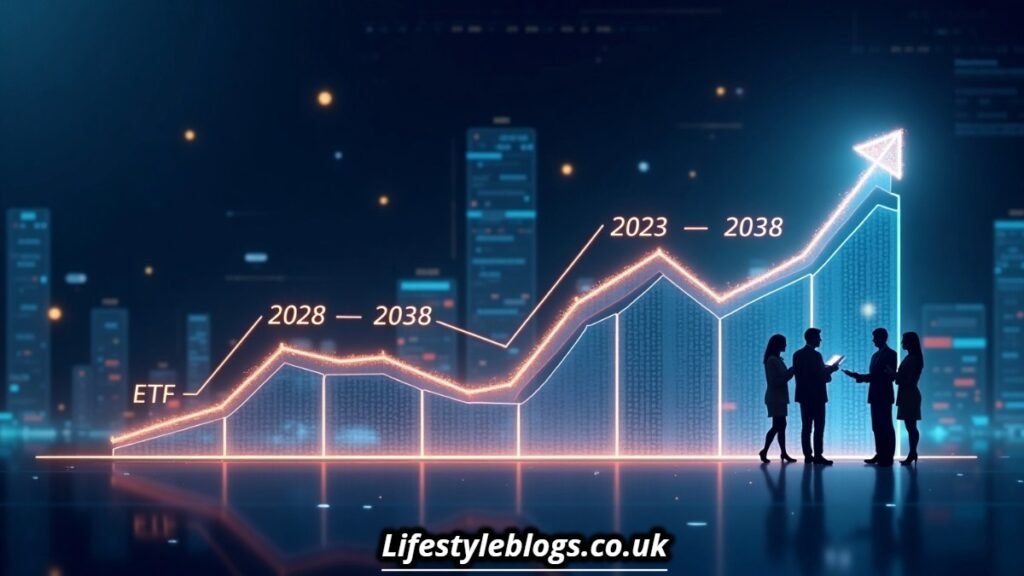When it comes to investing, understanding ETF swaps can feel like entering a world filled with finance jargon. But once you break it down, it’s a powerful tool with real benefits—and some risks. I’ve been following ETFs for years, and what I’ve noticed is this: ETF swaps are no longer just for institutional investors. They’re shaping the way many investors manage taxes, exposure, and costs. In this article, I’ll break everything down—from what ETF swaps actually are to what we might expect from 2025 to 2030, in plain English.
What is an ETF Swap?
An ETF swap is when investors exchange one ETF for another—usually within the same fund family—to minimize capital gains taxes or rebalance their portfolio. These swaps don’t necessarily affect your tax bill right away, which makes them especially popular with large institutions and hedge funds.
Think of it like swapping puzzle pieces without changing the full picture. You still hold exposure to the market, but you’ve optimized it in a smarter way.
Why ETF Swaps Are Gaining Momentum
- Tax advantages: Swaps can delay taxable events.
- Cost efficiency: Investors can swap out high-fee ETFs for lower-cost versions.
- Portfolio strategy: Investors use them to shift exposure based on market conditions.
- Liquidity & access: More brokers and platforms are supporting in-kind transfers.
In my own trading experience, I’ve found that ETF swaps can help avoid triggering short-term capital gains, which can really add up if you’re an active investor.
ETF Swap Price Prediction: 2025–2030
Now let’s talk numbers and expectations. Based on historical patterns, market growth, and current fund flows, here’s what analysts (and personal insights) are predicting:
| Year | Prediction | Key Factors |
| 2025 | Stable growth | Rise in retail usage of swaps; more broker support |
| 2026 | Moderate increase | Tax policy shifts could boost ETF swap demand |
| 2027 | Market correction impact | If a downturn hits, swaps may become safety tools |
| 2028 | High growth | Tech-driven platforms and automation integration |
| 2029 | Flattening | Swap usage may plateau due to regulatory ceilings |
| 2030 | Rebound or correction | Dependent on global ETF and swap reform trends |
Market Trends to Watch
- Rising retail access: Platforms like Fidelity and Schwab are simplifying ETF swaps.
- AI-driven fund suggestions: Robo-advisors may start offering swap-based strategies.
- Global ETF competition: Asia and Europe are catching up in swap innovations.
- Thematic ETFs: Expect more swaps involving tech, climate, or defense ETFs.
Risks Investors Should Be Aware Of
While swaps can help defer taxes and fine-tune portfolios, they’re not foolproof.
- Regulatory risk: The IRS may change its view on in-kind transactions.
- Liquidity mismatch: Not all ETFs are equally liquid, leading to price inefficiencies.
- Complexity: For everyday investors, swaps might feel too technical at first.
I’ve personally seen investors get burned because they didn’t fully understand the ETF they were swapping into—especially when it came to fees or sector exposure.
Investment Strategies to Consider (2025–2030)
Here are some practical strategies that might help based on risk appetite:
- Long-term investors: Use swaps to defer taxes while staying in market exposure.
- Sector-focused investors: Rotate through sectors via swaps without triggering sales.
- Active traders: Pair swaps with tax-loss harvesting for smarter year-end results.
Pro tip: Always compare the underlying holdings and expense ratios before swapping. Two ETFs tracking the same sector might perform differently.
Expert Opinion & What Analysts Are Saying
Analysts at firms like ETF.com and Morningstar believe ETF swap activity will keep rising—especially as passive investing grows and tax minimization remains a key strategy. According to a recent survey by Brown Brothers Harriman (BBH), over 70% of institutional investors plan to increase their usage of ETF swaps by 2026.
Common Misconceptions About ETF Swaps
- Myth: You need to be wealthy or an institution to benefit.
Truth: Many retail brokerages offer swap tools to everyday investors. - Myth: ETF swaps eliminate taxes.
Truth: They defer—not erase—your tax obligations. - Myth: All ETF swaps are good.
Truth: Not if you’re swapping into a less efficient or expensive fund.
FAQs
What is an ETF swap?
It’s when one ETF is exchanged for another to reduce taxes or adjust your investment strategy.
How are ETF swap prices predicted for 2025–2030?
Experts use market trends, interest rates, and historical data to forecast future prices.
Are ETF swaps risky?
They carry some risk but are generally safe if used with a clear strategy.
Who should use ETF swaps?
Ideal for investors looking to manage taxes and rebalance portfolios smartly.
What’s the main benefit of ETF swaps now?
Tax efficiency and flexibility—especially in changing markets.
Final Thoughts
ETF swaps may sound intimidating at first, but with the right strategy, they can unlock serious advantages—especially as we look toward 2025 and beyond. Whether you’re a seasoned investor or just starting out, keeping an eye on swap trends and predictions will help you make smarter decisions. From my own journey, I can tell you this: understanding tools like ETF swaps separates the casual investor from the confident one.
